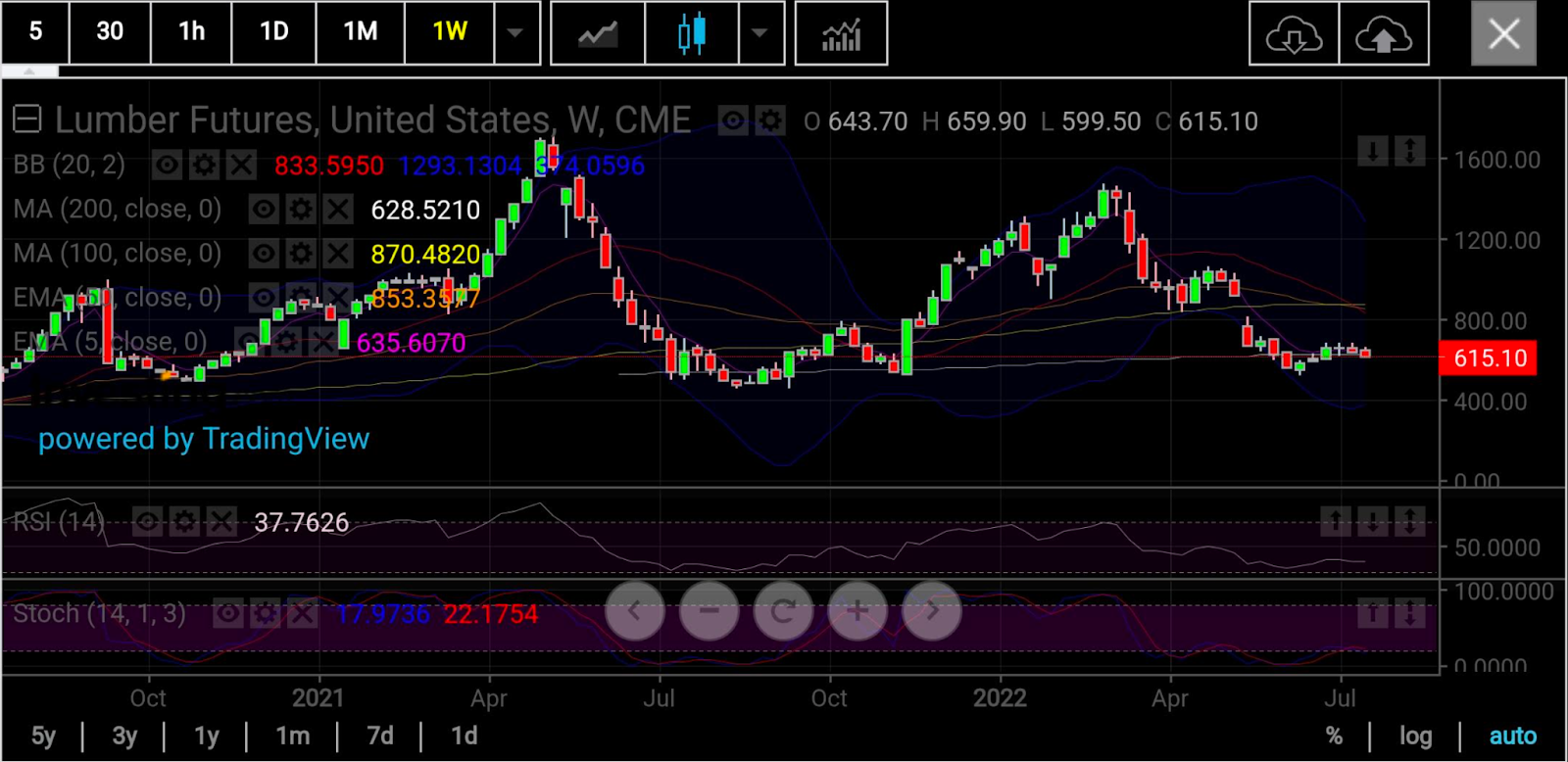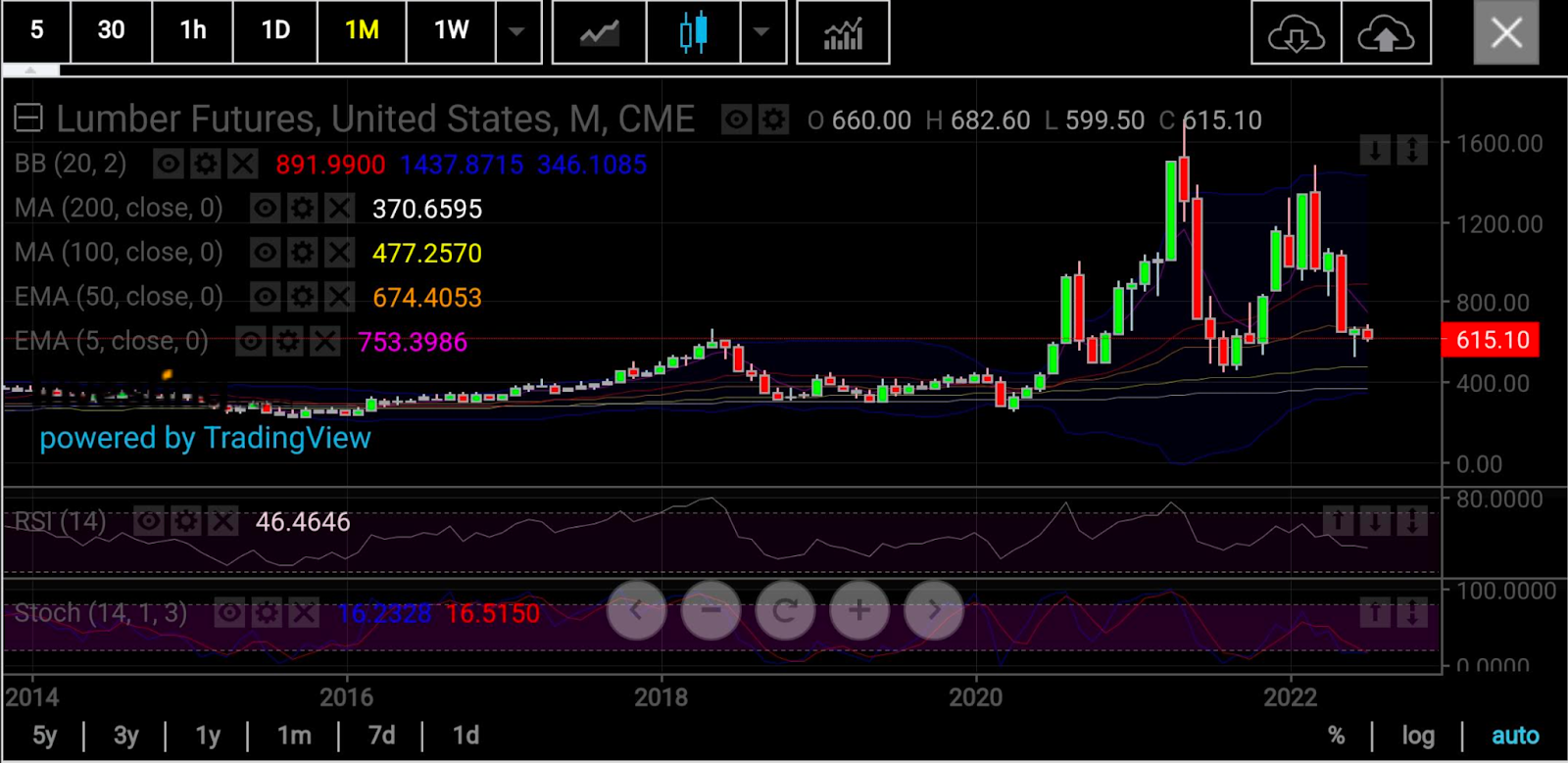- Lumber futures are a lagging indicator of home building
- There is a disconnect between futures of lumber and physical prices of lumber
- Demand for homes still exceeds capacity and needs to fall appreciably
Hopeful home buyers in the US looking for a bigger break from falling lumber futures should look elsewhere.
Reason? Lumber prices are a lagging indicator of home building activity. When builders slow down on construction, futures of lumber are the first to come down. It’s not the other way round, as prospective home buyers may think.
According to Tim Morris, associate broker with HomeSmart and a former homebuilder himself, prices of building materials and homes go up “because they can.”
Expanding on the well-expounded theory that demand for homes still far exceeds supply, Morris said in comments carried by azbigmedia.com:
"Everybody has seen articles saying lumber prices are falling 49% or more and think that affects their ability to acquire a new home. It’s completely disconnected. The only place you see that is in The Wall Street Journal. The volatility of that market is creating the need for everybody to understand that the buyer is the one who’s going to be at risk.”

Charts by skcharting.com with data powered by Investing.com
Lumber prices have tumbled 46% this year, but it’s going to take time for the end user to see those savings, said Tom Nun, owner of Horizon Commercial Contracting.
Ahead of Friday’s US futures trading, pricing for lumber was at just above $615 per-thousand-board-feet, after hitting a one-month low of just under $600 on Thursday. In December, it rose to as high as $1,172.
Sales of existing homes in the United States fell a fifth month in a row, The National Association of Realtors said Wednesday as the housing industry experienced more fallout from spiking mortgage rates and recent record highs in home prices that made the cost of ownership prohibitive.
Lawrence Yun, chief economist at the realtors’ group, said:
“Falling housing affordability continues to take a toll on potential home buyers. Both mortgage rates and home prices have risen too sharply in a short span of time."
The sales numbers on existing homes came on the heels of US housing starts from earlier in the week that showed home-building activity at a nine-month low in June as rate hikes by the Federal Reserve began to seriously impact the sector.
The US housing market is outsizedly skewed by interest rates, which have been rising since March as the Federal Reserve tries to beat back inflation expanding relentlessly at its fastest pace in four decades.
US home prices jumped 37% over the past two years. Mortgage rates, meanwhile, have surged from 3.2% to 5.88% in the past six months. The combination has pushed up the cost of home ownership in the United States to the highest in a generation, putting purchases out of reach for a growing number of prospective buyers, particularly first-time purchasers.
Housing and real estate play important roles in the US economy, with roughly 65% of occupied housing units being owner-occupied. That makes homes a substantial source of household wealth and home construction a key provider of employment.
In the 2008/09 financial crisis, a crash of the housing market precipitated what later came to be known as the era of the Great Recession. Since then, the US property market has rapidly recovered on the back of economic recovery as well as demand from buyers.
Now, economists say demand for homes might be unraveling from the triple whammy of Federal Reserve rate hikes, inflation in house prices, and soaring mortgage rates.
Morris said under the best of circumstances for consumers, lumber futures shouldn’t fall or rise double-digits in a month like now. For years, futures of a per-thousand-board-feet typically traded between $300 and $400. All that changed with the pandemic, which prompted lumber manufacturers to cut back on production, sending prices soaring.
Said Morris:
“In April 2020, I was building in Casa Grande and was paying $31,718 for the framing. [In summer 2021], that same job cost $80,357. And there’s been three-month periods where prices vacillated as much as $25,000. That’s more than the whole margin in the house.”
He adds:
“It’s like gasoline at the pump. People hear about a pipeline breaking and gas at the pump goes up 50 cents per gallon. Then we find out it really didn’t break, but it takes two months for it to finally get back down to where it was.”
Nun concurs with Morris, saying he has seen his business affected by price uncertainty.
“Our clients need to have a firm idea of what their costs are going to be so they can calculate their return on investment and see if a project makes sense. With moving prices, it’s a tightrope to walk because we have some limitations from the lumber suppliers on how long they’re willing to hold the price that they float.”
Nun says he’s heard from subcontractors that they’re getting five-day quotes for plywood and oriented strand board (OSB).
Homebuilders typically get lumber pricing from a framing contractor, who got the information from a lumberyard, which priced a train car of product based on a middleman’s contract with futures holders.
Nun said a decrease in demand or increase of supply will need to continue for some time before price reductions happen further down the pipeline.
“Futures will come down … but the demand is still there, so there’s no compelling reason for producers to drop prices until they finally see a reduction in orders. And right now, they’re selling everything they can produce. There has to be a drop in demand or a big increase in supply before prices start to really come down at our level.”
So, where are lumber futures headed?

With US interest and mortgage rates going only one way—up—lumber futures are also likely to move the other way: down.
While fundamentals of supply-demand are key to lumber futures, chart signals could also indicate the way forward, said Sunil Kumar Dixit, chief strategist at skcharting.com.
Referring to Simple Moving Average rules, he said:
“A sustained break below recent swing low of $517 would push prices down further to the 100-Month SMA of $477 and extend to the 200-Month SMA of $370.”
“If $517 is not breached and prices get a lift above $682 level, upside move can resume to fill the runaway gap between $812 and $920 in the near term.
Disclaimer: Barani Krishnan uses a range of views outside his own to bring diversity to his analysis of any market. For neutrality, he sometimes presents contrarian views and market variables. He does not hold a position in the commodities and securities he writes about.
